You’ve Seen The Washington Monument. Now See the Other Washington Monuments
Unsurprisingly, the obelisk in Washington, D.C. is not the only monument to America’s first president
/https://tf-cmsv2-smithsonianmag-media.s3.amazonaws.com/filer/bb/63/bb6389f2-ed8a-45df-8af0-535dd88000e3/monument.jpg)
The 555-foot tall obelisk stands over the nation's capital much like the legacy of George Washington stands over America's history. And like the man it honors, the Washington Monument has been a source of unsavory truths, rumors and gingerbread over the years since it was completed on this day in 1884. It may have been built by slaves; its height and width are allegedly part of a widespread Masonic conspiracy; just this year, a 30-foot high model of it was constructed using the spicy holiday sweet. But although D.C,'s imposing white marble monument occupies a big space in America's imagination, it's far from the only Washington Monument around the country.
Many of the others were built around the same time as the Washington Monument in the nation's capital, which was begun in 1848. Fueled by patriotism following the War of 1812, a number of cities built monuments to America’s first president. They range from traditional statuary to more unusual designs. Take a look:
Baltimore, Maryland
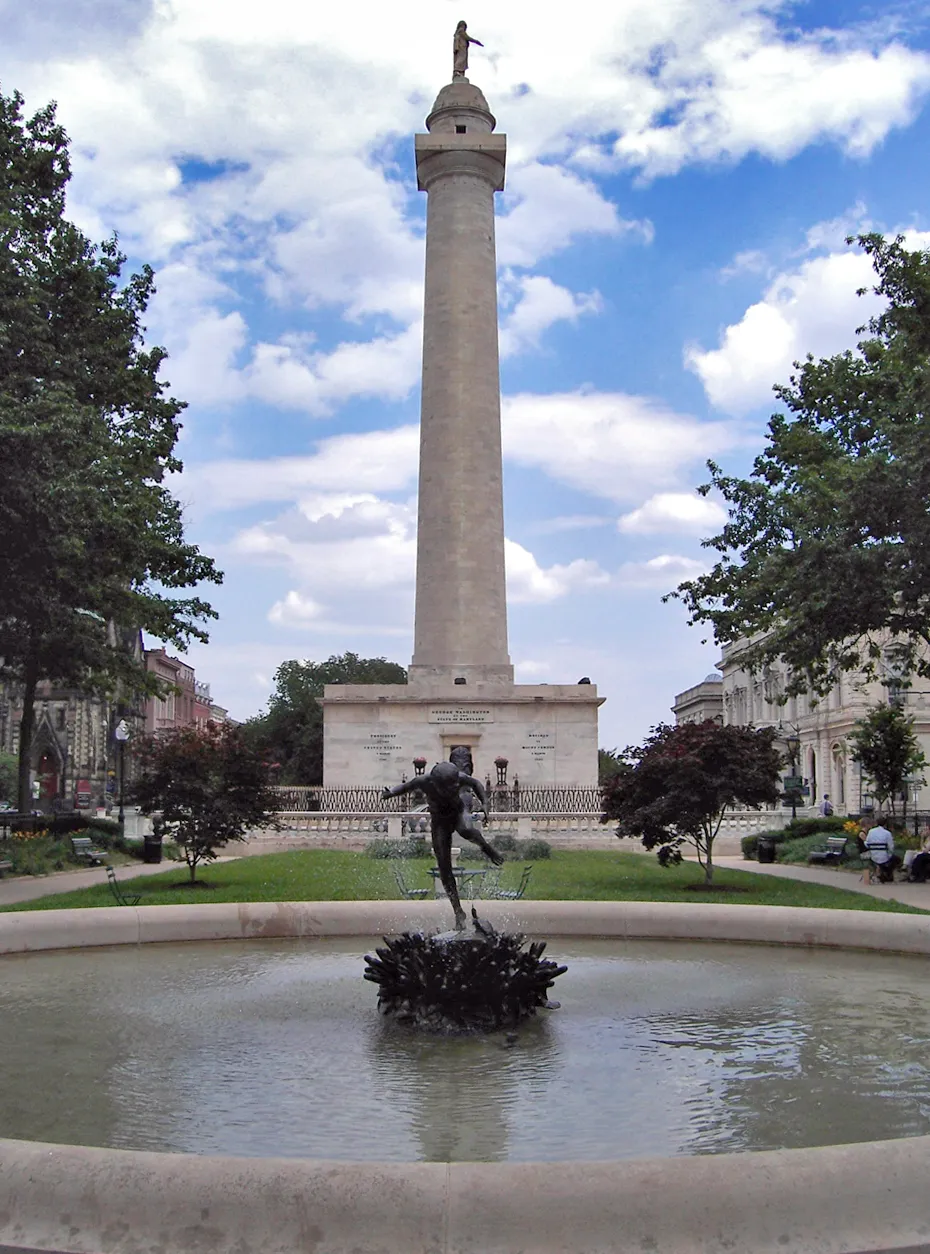
This monument, a column that is located in an urban square, was the first big monument to George Washington to be started. The cornerstone was laid in 1815, not even two decades after Washington's death. According to the official website of Mount Vernon Place, where the monument is located, funds for the project were raised by running a state-enabled lottery.
The monument’s original designer was Robert Mills, who went on to design D.C.’s monument. His first design for Baltimore had tiers running up the column, but that was scrapped in favor of a more simple design. In 2015, one secret of the column was revealed when workers digging for a sewage tank discovered a time capsule in its base.
Boonsboro, Maryland
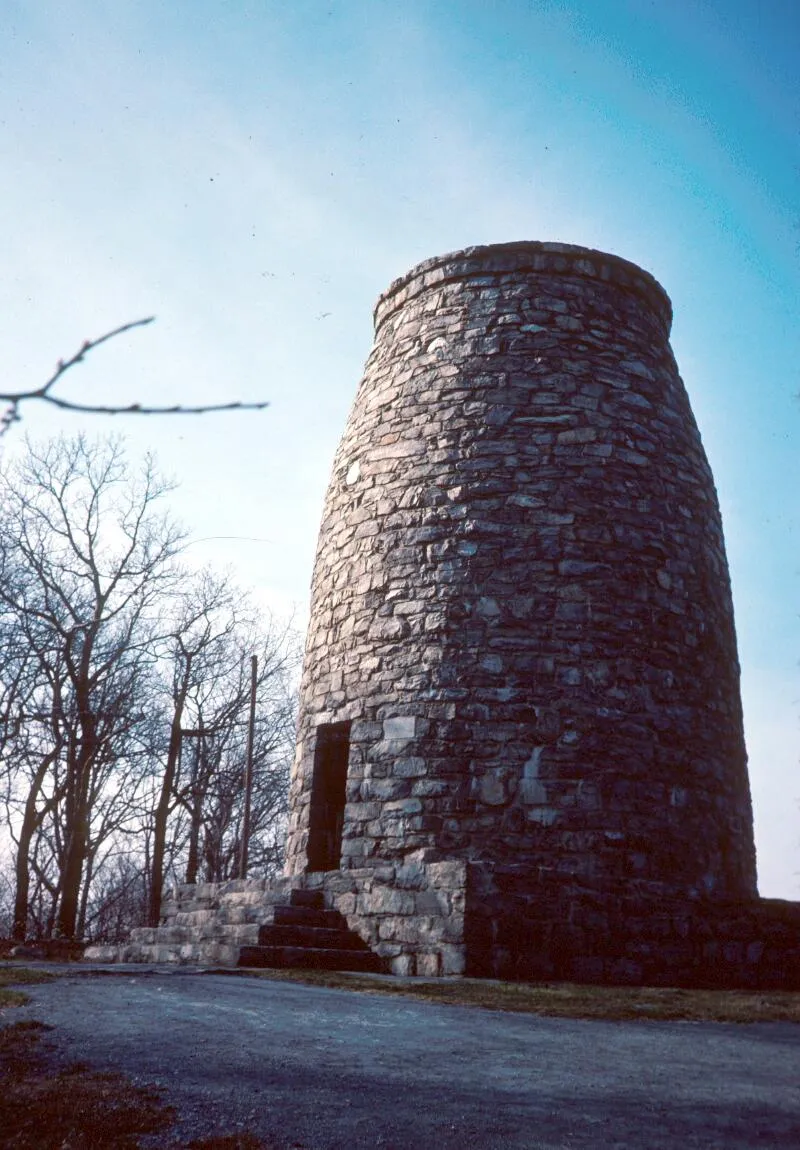
A second Washington Monument can be found in Maryland, in Boonsboro, Washington County. According to the Maryland Historical Trust, it’s supposed to be modelled after a Revolutionary War cannon, “but is often referred to as a ‘jug’ or ‘milk bottle.’”
The monument’s construction began, and reportedly ended, on July 4, 1827, thanks to an outpouring of patriotism from Boonsboro's 500 inhabitants. Because it was completed so fast, this monument lays claim to being the first monument to George Washington ever completed–the one in Baltimore wasn’t finished until 1829, according to Mount Vernon Place.
New York, New York
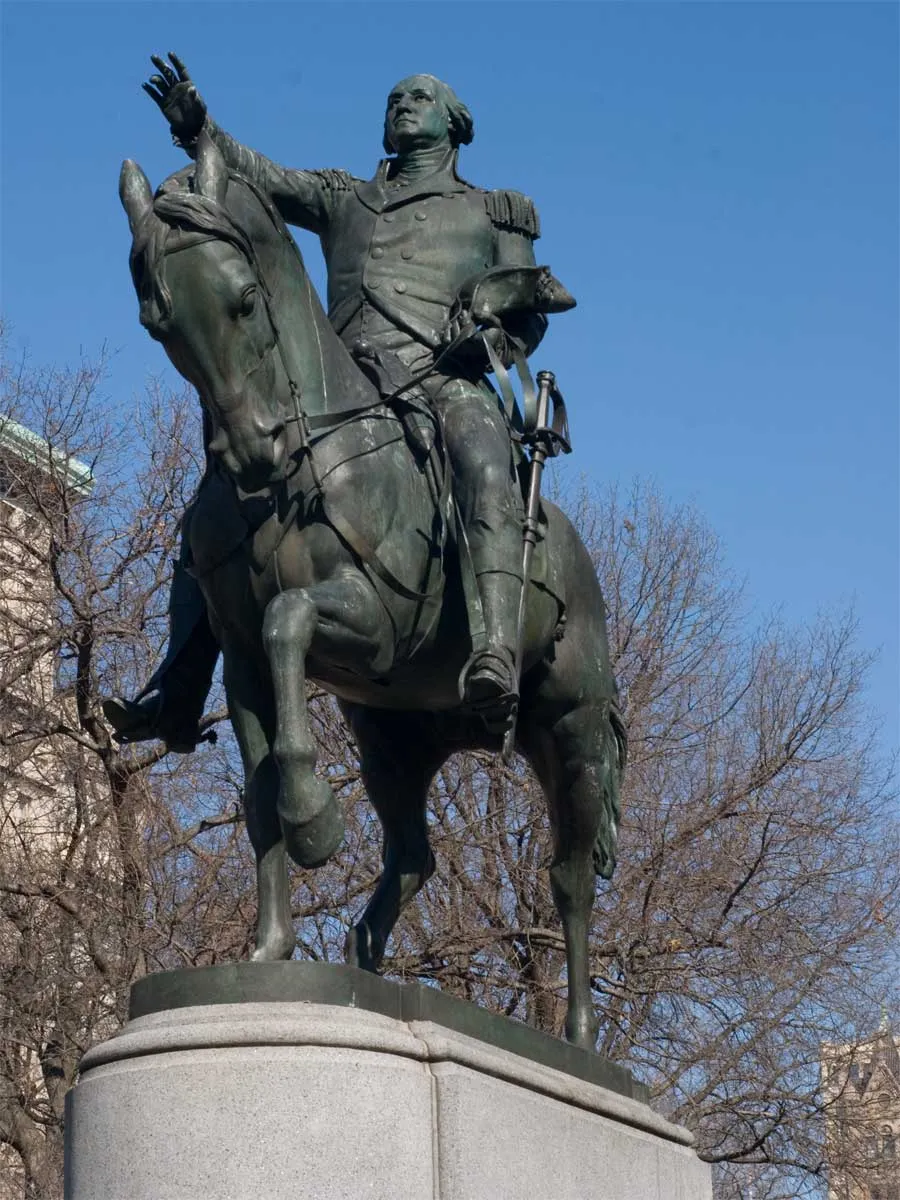
A monument to George Washington can be found in New York City’s Union Square Park.
That sculpture, which shows a seated Washington with his right arm outraised, is the oldest sculpture in the collection of NYC Parks, according to the organization’s website. Moneyed citizens of New York started trying to get a sculpture to the first president built in 1851, commissioning sculptor Henry Kirke Brown, who also did a sculpture of Lincoln for Prospect Park in Brooklyn. The statue was installed in the park in 1856.
Philadelphia, Pennsylvania
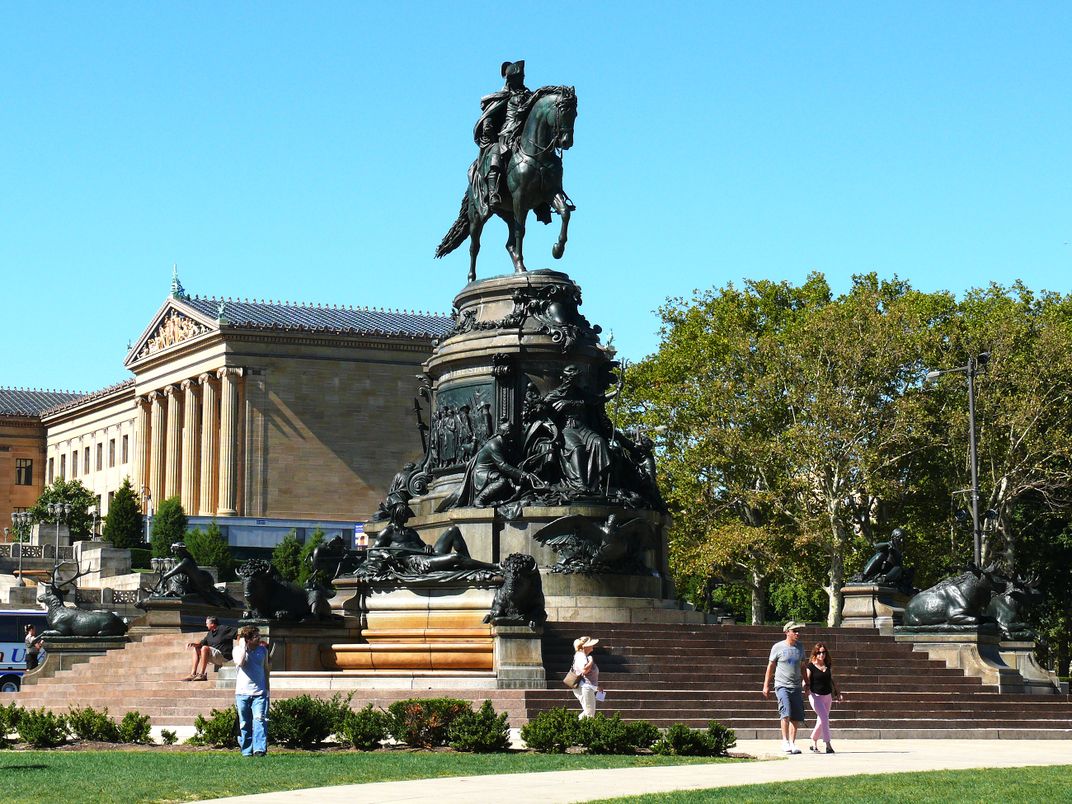
Philadelphia’s Washington Monument was completed in 1897. It shows Washington on a horse atop an ornate sculpted fountain. According to Rudolf Siemering, writing for the Association for Public Art, the idea for this monument dates back to Independence Day, 1810, when the local Revolutionary War veterans’ association resolved to commission it. The three-tiered monument reflects how civic wealthy wanted Washington's legacy to be understood at the time: On the top level sits Washington riding a horse, while the next tier includes "allegorical figures depicting his time," Siemering writes, including a Native American man. The bottom tier shows plants and animals from the country that Washington helped create, including, poignantly, a buffalo.
Milwaukee, Wisconsin
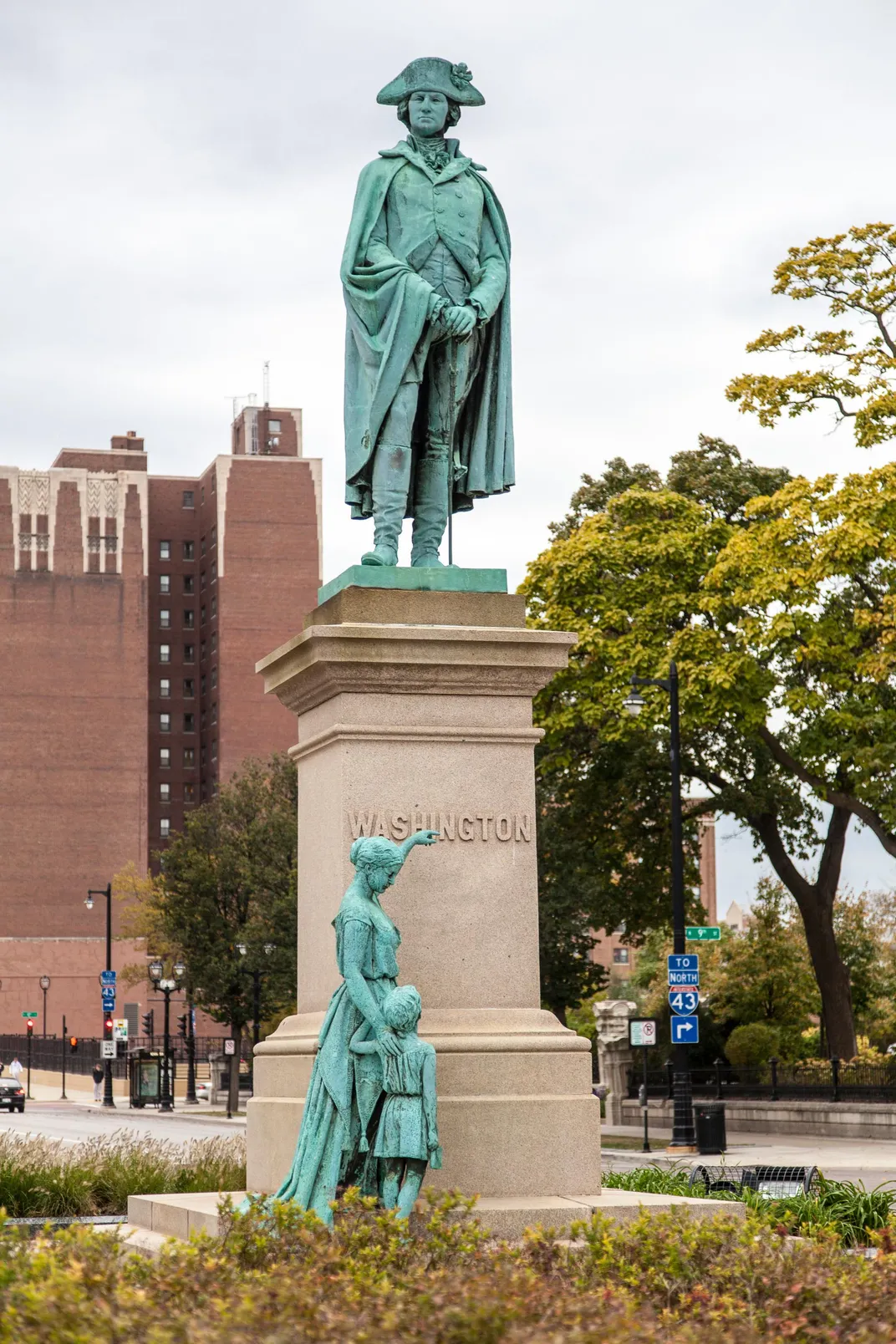
This bronze monument, erected in 1885, stands near Marquette University. It features a standing Washington, aged 43, dressed as a Continental Army officer holding a sword. Like Philadelphia's monument, the figures below Washington are symbolic, writes the Smithsonian American Art Museum. In this case, a woman and child look up at him, symbolizing "history or education," the museum writes.